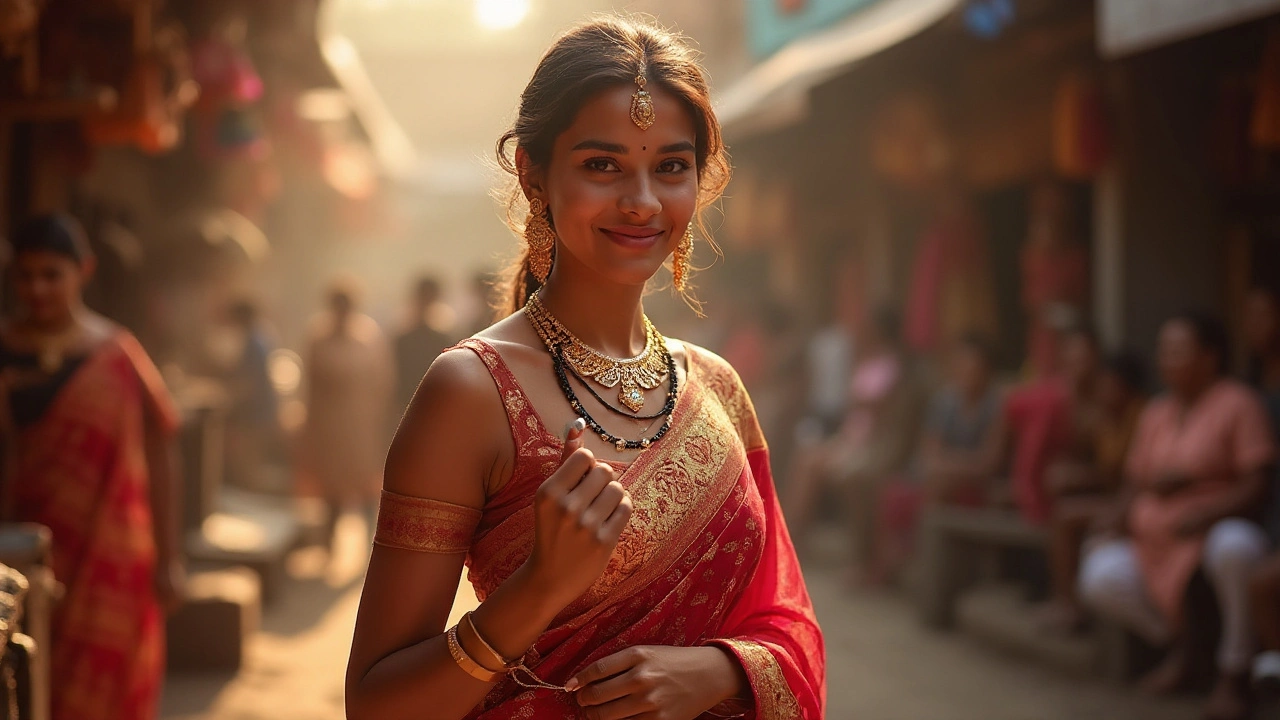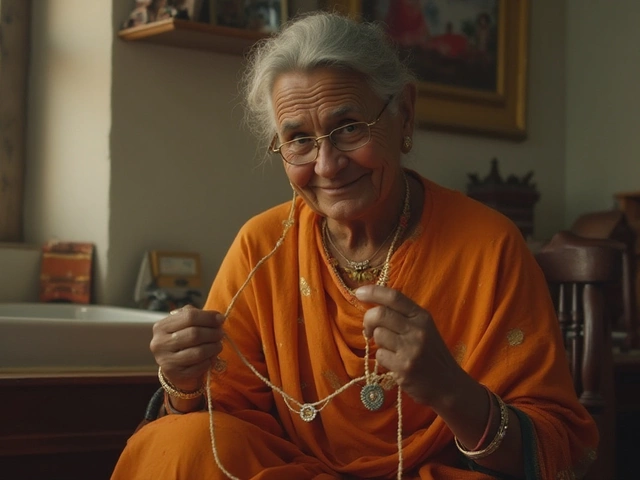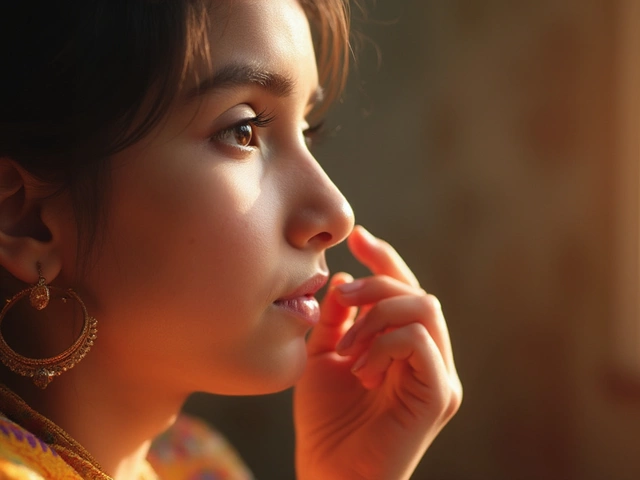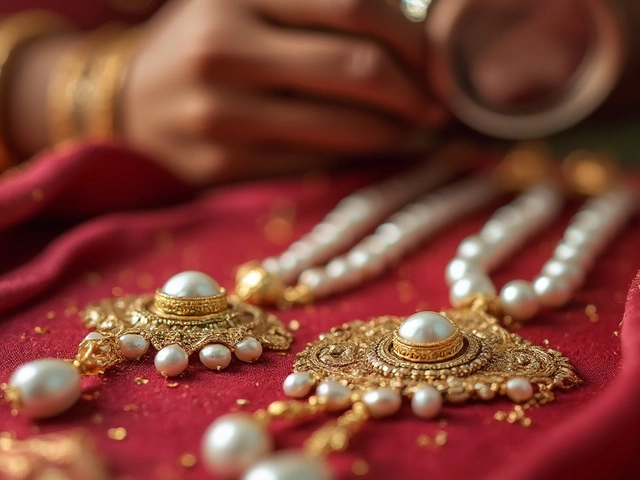The mangalsutra, an emblematic piece of jewelry in Indian culture, is more than just a necklace; it's a profound symbol of marital commitment and love. Traditionally worn by married women, it has seen evolutions both in design and the number of pieces adorning the wearer.
Interestingly, the practice of wearing two mangalsutras has been gaining traction for various reasons. Some women choose to wear two due to regional customs, while others mix modern aesthetics with traditional values. This blending of styles allows for an amalgamation of what feels right personally and culturally.
Whether you are adding a new dimension to your attire or keeping alive a familial tradition, knowing how to pair these necklaces can elevate your style significantly. Beyond aesthetics, maintaining the significance of the mangalsutra is crucial, respecting its place in the sanctity of marriage. Let us dive into how you can beautifully incorporate these trends into your daily wear while honoring its deep-rooted symbolism.
- Historical Significance of the Mangalsutra
- Cultural Meaning and Symbolism
- Modern Trends and Personal Style
- Combining Traditional and Contemporary Designs
- Tips for Wearing and Maintaining Multiple Mangalsutras
Historical Significance of the Mangalsutra
The mangalsutra, a deeply rooted symbol in Indian marriages, boasts a history as rich as the cultural tapestry of the Indian subcontinent. Dating back centuries, this necklace was not merely about ornamentation but served as a profound emblem of a sacred vow between husband and wife. Traditionally, the mangalsutra was crafted using black beads and gold, materials believed to ward off negativity and ensure the husband's longevity. This ancient practice finds its origins in the Southern regions of India and over time, spread across the nation, each region infusing its unique elements and design sensibilities.
The significance of the mangalsutra is beautifully intertwined with Hindu traditions. It is often compared to the Western practice of exchanging rings but with an added layer of cultural ethos. During the wedding ceremony, it marks the pivotal moment which transforms the woman's identity from that of a daughter to a wife, pledging love, fidelity, and respect. Historical texts like the Manu Smriti also reference the practice of a sacred thread as a protector of marital harmony and a symbol of the binding matrimony. This sacred aspect elevates the mangalsutra beyond mere jewelry.
As societies progressed, the adaptability of the mangalsutra saw its incorporation into various cultural shifts. Particularly during the Mughal period, jewelry design began to embrace intricate craftsmanship, influencing how mangalsutra designs evolved, emphasizing luxury and royal elegance. In some regions like Maharashtra, the iconic two vatis or cups within the mangalsutra hold specific meanings, representing both the Shiva and Shakti - divine masculine and feminine energies. These vatis reflect the harmony that every marital union strives to achieve and uphold.
The Mangalsutra is often regarded as 'the thread of love and goodwill,' something that unites two souls for life," shares Aishwarya Rai Bachchan, a cultural ambassador and renowned actress.As the world embraced modernization, an interesting juxtaposition developed between traditional symbolism and contemporary aesthetics in mangalsutra designs.
Respecting its historic essence, today's choices in mangalsutra reflect a blend of personal expression and cultural loyalty. Modern designs may highlight a mix of gemstones, customizations, and sometimes, even subtle minimalism, yet they inherently aim to uphold the virtues this ornament has signified for ages. As we delve into the nuances of wearing two mangalsutras, understanding these historic threads allows wearers to appreciate the lineage they carry with grace and pride. This precious necklace remains not only an adornment but also a cherished piece of history that continues to evolve through time's canvas. Indeed, the story of the mangalsutra is as diverse and intricate as the vast Indian culture itself, echoing the tales of love through time.
Cultural Meaning and Symbolism
The mangalsutra is not merely a piece of jewelry; it is deeply embedded in the cultural tapestry of Indian society, representing the sacred vow of marriage. Traditionally, this necklace serves as a tangible manifestation of the marital union, embodying fidelity, love, and respect between partners. The beads and gold pendant of the mangalsutra each hold their symbolism—black beads are believed to ward off evil, while gold signifies prosperity and well-being. Wearing a mangalsutra affirms a woman's marital commitment and her step into a new phase of life. The choice of wearing a second mangalsutra can stem from personal belief, familial expectation, or regional customs. In some Indian communities, it is customary for the bride to wear a mangalsutra gifted by her own family alongside another from the groom's side, signifying the coming together of the two families. Thus, wearing dual mangalsutras amplifies the protective aura and symbolizes being doubly blessed.
The distinct designs of the mangalsutra also offer a glimpse into the diverse cultural panoramas across India. For instance, the Maharashtrian gold and black beaded necklace with its traditional 'vatis' holds different cultural significance from a South Indian 'thali', underscoring India's vast cultural sachet. This variety contributes to the rich narrative associated with the mangalsutra, as it is not a monolithic concept but a mosaic of different regional styles and meanings. Wearing two mangalsutras allows one to embrace these different traditions, celebrating a broader spectrum of Indian cultural heritage. A survey from the Indian Institute of Jewelry demonstrated that nearly 32% of married women in urban areas are open to wearing multiple Indian jewelry pieces to honor different traditions, illustrating the evolving perspective on this age-old symbol.
Moreover, the significance of the mangalsutra can also be seen in its adaptability to modern sensibilities and design aesthetics. Many women now opt for designs that incorporate both traditional elements and contemporary styles. This adjustment is not just about fashion but a reinforcement of cultural ties in a language that resonates with today's spirit. The cultural meaning thus shifts subtly from merely being a symbol of marital status to being an emblem of personal choice and familial pride.
As noted by renowned jewelry designer Tarun Tahiliani, "The mangalsutra has evolved from being a traditional symbol to an expression of individuality and personal style while still encapsulating the sacred bond of marriage."
In summation, while the core of the mangalsutra's significance remains anchored in tradition, its form and representation continue to adapt. What remains unchanged is its symbolic potency which transcends mere ornamentation. Whether through the addition of a second mangalsutra or evolving design elements, the cultural and symbolic relevance of this piece of jewelry endures, connecting past wisdom with present identity in a seamless, elegant arc.
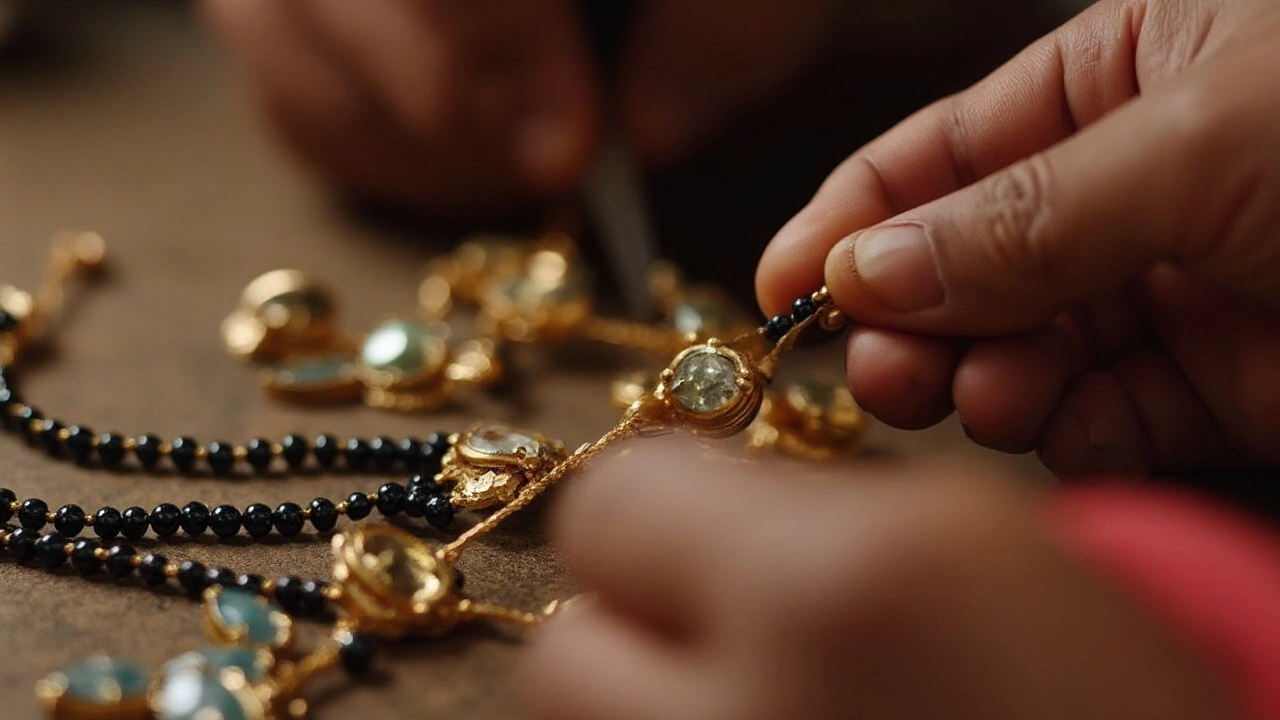
Modern Trends and Personal Style
Recently, the traditional mangalsutra designs have undergone a modern transformation, offering a fresh perspective into how they can be worn. While their roots lie deep within cultural significance, many women today see the mangalsutra as a piece that can seamlessly blend with contemporary styles and fashion trends. This evolution has paved the way for creativity, allowing individuals to express their personal style while maintaining traditional values. The dual-mangalsutra trend, in particular, is an embodiment of this dynamic shift. Whether it's a lightweight chain paired with a classic design or layering different lengths and patterns, the choices are expansive. Such combinations not only allow for personalization but also reflect a woman's unique journey and identity.
A key driver of this trend is the desire to showcase versatility. Women today are embracing mangalsutra designs with varying materials, experimenting with gold, platinum, diamonds, and other precious stones. It signifies a shift from uniformity to uniqueness, celebrating every blend of tradition and modernity. This inclination towards personalized jewelry is reflective of a broad cultural evolution, where self-expression is taking the forefront. According to the Jewelry Council of India, "Modern jewelry design encourages individuality while keeping a touch of cultural history alive." This encapsulates the growing movement towards customized designs that honor tradition yet invite innovation.
Today, many celebrities and influencers also sport two mangalsutras, often incorporating different designs to match every occasion - from casual outings to grand events. This approach not only adds a layer of elegance but also sets a narrative for others to follow. Fashion experts suggest that mixing and matching these designs can be a way to celebrate both one's personal life and cultural ancestry in a very fashionable way. The juxtaposition of these designs helps to make them more adaptable to diverse wardrobes, from western attire to ethnic wear. There’s advent of online platforms that offer virtual design studios, allowing individuals to craft their personalized versions before purchase, further fueling this popular trend.
Exploring multiple mangalsutra designs enhances the wearer's capability to engage with her heritage in a manner that feels relevant today. Many women are integrating elements that resonate deeply with their personal histories, such as charms, symbols, or specific stone settings. These additions not only enrich the visual appeal but add layers of meaning to the piece. From geometric shapes influenced by modern art to intricate patterns inspired by traditional motifs, the potential for customization is vast. Importantly, the evolution of the mangalsutra isn't just about aesthetics. It's about how jewelry can serve as a storytelling medium, expressing tales of love, identity, and aspirations.
Making the choice of wearing two mangalsutras can be a deliberate decision taken by many modern women, reflecting their lifestyle choices and the values they hold dear. Opting for different configurations has been known to symbolize different aspects of life and marriage, making it more than just a fashion statement. This customization in practice, backed by personal tales, not only leads to a deeper connection with one's cultural roots but offers a fresh lease in standing out and being uniquely identifiable. The fusion of modern and traditional Indian jewelry practices encapsulates the diversity of thought seen in today's society, echoing in both style and substance.
Combining Traditional and Contemporary Designs
Wearing a mangalsutra has always been about representing the sanctity of marriage in Indian culture, a tradition deeply rooted in rituals and customs. Yet, the fashion landscape for this piece has been ever-evolving, with women choosing to embrace both its traditional essence and contemporary flair. This evolution is much like witnessing the Indian society itself blending the old with the new, reflecting dynamism in traditions. For instance, while the historical design of a mangalsutra has its profound charm, introducing modern touches often brings a refreshing look that aligns with today’s fashion sensibilities without losing touch with its symbolic significance.
A popular method to combine these two styles is by maintaining the traditional pendant but updating the chain or beads to something more contemporary. This can mean replacing the classic black beads with something as modern as a sleek gold or silver chain, or alternating the bead design with motifs or gemstones like diamonds or rubies. Such changes infuse a bit of modern jewelry aesthetic while keeping the ancestral symbolism intact. As designer Anita Dongre once mentioned in a fashion interview, "The essence of tradition combined with modern design reflects not only personal style but also empowers one to connect with their cultural roots in a contemporary setting."
There is also a growing trend of incorporating different materials into the mangalsutra — such as integrating leather or colored beads alongside the traditional black and gold. This gives an entirely new artistic expression, perfect for women who want their jewelry to speak of both ceremonial value and personal flair. Additionally, multistone mangalsutras that interlace diamonds with the black bead chain have become increasingly popular, offering a shimmering formality that appeals to both traditional weddings and modern, everyday looks.
Considering Cultural Influences
Interestingly, regional influences play a significant role in shaping how these designs take form. In South India, for example, thick gold chains are commonly used alongside black beads, whereas in Northern India, lightweight chains with minimalistic pendants are gaining favor. This regional adaptability also grants the wearer a creative playground to choose designs that best represent their personal narrative and cultural lineage.
Women today might also find value in opting for a layering technique, where two different mangalsutra designs are worn together. This is not just mixing styles but also stories — the story of what has been and what is desired for the future. In layering, balance is key. Pair a traditional piece with a contemporary design that might have a shorter length or a distinctly different pendant size to create a cohesive yet contrasting look. Even the variations in design can tell stories, rooted in cultural fidelity and a dash of modern nimbleness.
If you're interested in this experimental fusion, start by mingling different lengths and pendant shapes or colors. A longer, traditional piece can be complemented by a shorter, modern design. You can also incorporate thematic elements — perhaps a traditional goddess pendant paired with a nature-inspired motif that speaks to your love for the environment. This evokes not just a feeling of uniqueness but also demonstrates the wearer's ability to adapt and redefine legacy in their jewelry choices.
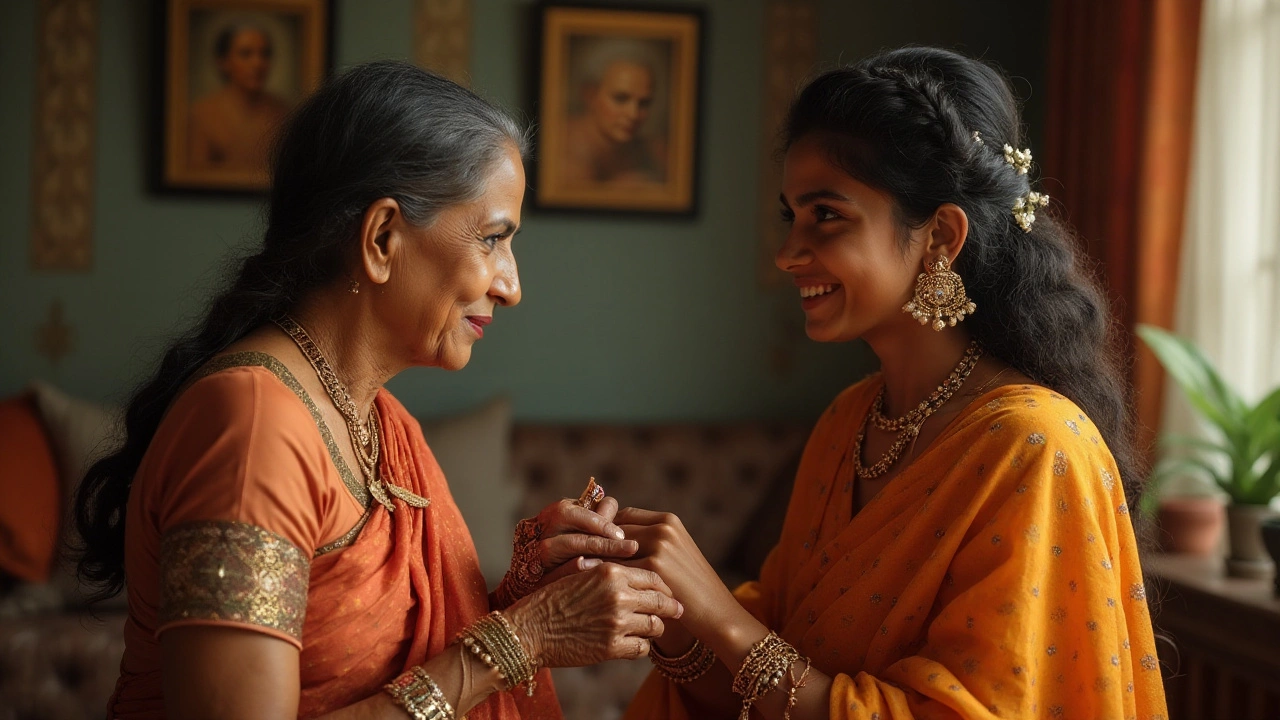
Tips for Wearing and Maintaining Multiple Mangalsutras
Wearing two mangalsutras can be a delicate art, as it requires balancing tradition with style effortlessly. First, consider layering techniques. This begins with choosing necklaces of varying lengths that can complement each other, allowing each piece to stand out. A great tip is to pair a traditional design with a more contemporary one to create a contrast that not only looks stylish but also respects the diverse cultures and times represented by each piece. For instance, a classic black bead mangalsutra might pair beautifully with a more modern, gold-hued variant. This method effectively enhances one's attire, making it a conversation starter.
Next, let’s touch upon the importance of proper maintenance to ensure longevity and shine. Given the fact that these Indian jewelry pieces often carry intricate detailing and use materials that can tarnish over time, regular cleaning is vital. Many women rely on professional cleaning to keep the pieces bright and beautiful, but simple home care methods can be equally effective. Use gentle soap and warm water to clean the jewelry, and always dry them thoroughly with a soft cloth to avoid scratches. Ensuring proper drying also prevents tarnish and enhances the lifespan of the jewelry.
"Elegance is not standing out, but being remembered." - Giorgio Armani
Let's not forget the clasp and chain strength. When wearing multiple mangalsutras, the combined weight can be significant. Always check that the clasps are secure and the chains are sturdy. Weak points can be a cause for losing these precious symbols, and it's especially important if the mangalsutras feature precious stones or are heirlooms. It is often recommended to have the settings checked by a jeweler annually. Additionally, storing them correctly — ideally in a soft-lined box or separate cloth pouches — prevents tangling and wear from rough surfaces.
Finally, on special occasions or when you desire a more striking look, don’t hesitate to take a stylistic plunge. You can incorporate matching earrings or bangles to complement the overall design. This can also be an opportunity to play with colors and materials, possibly including some elements made from lesser-known traditional techniques or regional artistry. Visiting family events or festive gatherings is the perfect time to display these vibrant expressions of cultural practices. With thoughtful coordination and some creative flair, the practice of wearing multiple mangalsutras can be both a tribute to tradition and a personal style statement.
